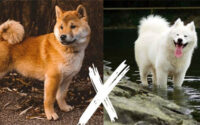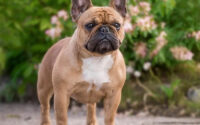Bloodhound female
The Bloodhound, an iconic breed known for its unparalleled scent-tracking abilities, is a dog that has captured the attention and admiration of canine enthusiasts worldwide. With their solemn expressions and affectionate demeanor, Bloodhounds serve as both loyal companions and efficient workers. Among these gentle giants, the female Bloodhound is a remarkable specimen of her breed, combining acute olfactory prowess with a unique set of traits and temperament. This article delves into the world of the female Bloodhound, exploring her origins, abilities, care requirements, and invaluable contributions to search and rescue missions.
Meet the Bloodhound Female: An Overview
Table of Contents

The female Bloodhound is a sight to behold, with her loose, wrinkled skin and long, drooping ears framing a noble and somber expression. Females of this breed generally stand about 23 to 25 inches tall at the shoulder and weigh between 80 to 100 pounds, slightly smaller and lighter than their male counterparts. Their coat, which can come in liver and tan, black and tan, or red, is short but dense, providing protection from the underbrush they often traverse during scent work. Though they may appear imposing, Bloodhound females are typically gentle and sociable creatures, with a penchant for forming strong bonds with their family.
Tracing the Lineage: Bloodhound Origins

The origins of the Bloodhound can be traced back to medieval Europe, where they were bred by monks in monasteries to track game and later to track people. Their lineage is believed to have descended from hounds kept by Saint Hubert in Belgium, eventually making their way to England and other parts of the world. The breed’s name is thought to come from the term “blooded hound,” indicating a hound of purebred status. As the breed evolved, so did their specialized skill set, cementing their reputation as the supreme scent trackers of the canine world.
Scent Tracking: Bloodhound’s Remarkable Skill

Bloodhounds, including females, are renowned for their scent-tracking abilities, which are considered the most accurate among dogs. Their olfactory prowess is attributed to:
- A large number of olfactory receptors, roughly 300 million, which dwarfs the human’s 5 million.
- Long, droopy ears that help to trap scents near the nose when they are tracking.
- Wrinkles around the face that also assist in holding scents close to the nose.
With these physical attributes, a Bloodhound’s sense of smell is so accurate that their tracking results can even be admissible as evidence in a court of law. This capability makes them invaluable assets in search and rescue operations and law enforcement.
The Female Bloodhound: Traits and Temperament

Female Bloodhounds, while similar to males in many ways, can exhibit distinct traits. They are often perceived as more independent and headstrong, yet they can also be more reserved and sensitive than males. Their temperament is generally:
- Affectionate and friendly, craving companionship and attention.
- Patient and gentle, making them excellent companions for children.
- Stubborn at times, requiring consistent and patient training.
- Intelligent, with the ability to solve problems and follow complex scent trails.
These traits make the female Bloodhound a respected partner in various roles, from family pet to working dog.
Caring for Your Bloodhound: Health and Nutrition

Caring for a Bloodhound, especially a female who may have specific needs during different life stages, requires dedication and knowledge. Their health and nutrition are paramount, with a few key considerations:
- Diet: A balanced diet suitable for large breeds is necessary to maintain their health and energy levels. Supplements can be added to support joint health, especially as they age.
- Exercise: Regular exercise is crucial to prevent obesity, a common issue in the breed. However, due to their tracking instincts, they should be kept on a leash or in a secure area when outdoors.
- Grooming: Their short coat is relatively easy to care for, but their ears and facial wrinkles require regular cleaning to prevent infections.
- Health screenings: Routine vet check-ups and screenings for genetic conditions such as hip dysplasia and bloat are important for a long and healthy life.
By paying close attention to these aspects, owners can ensure their Bloodhound thrives under their care.
Bloodhound Females in Search and Rescue Work

Female Bloodhounds have a storied history in search and rescue, often overshadowing their male counterparts with their focused tracking skills. They are especially invaluable in:
- Finding missing persons due to their relentless tracking drive.
- Trailing scents over long distances and even across water.
- Working in a variety of environmental conditions, adapting to both urban and rural settings.
- Assisting in criminal investigations by following scent trails left behind by suspects.
Their dedication to the task and ability to work for long periods make female Bloodhounds an essential asset in the realm of search and rescue operations.
Comparison of Male and Female Bloodhound Traits
| Trait | Male Bloodhound | Female Bloodhound |
|---|---|---|
| Height | 25-27 inches | 23-25 inches |
| Weight | 90-110 pounds | 80-100 pounds |
| Temperament | More laid-back | More independent |
| Sensitivity | Less sensitive | More sensitive |
| Training | Can be more easygoing | May require more patience |
| Bonding | Strong | Can be stronger, more selective |
The female Bloodhound’s storied past and remarkable abilities make her not only a fascinating subject but also a pivotal member of many working teams and families. Their combination of keen tracking skills, distinct temperament, and the unwavering loyalty they offer to their handlers and companions underscore the importance of understanding and caring for these magnificent animals. Whether they’re tracking a lost child or simply lounging by the fireplace with family, the female Bloodhound remains a testament to the deep-rooted connection between humans and their four-legged partners.



